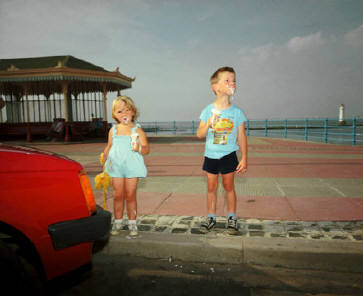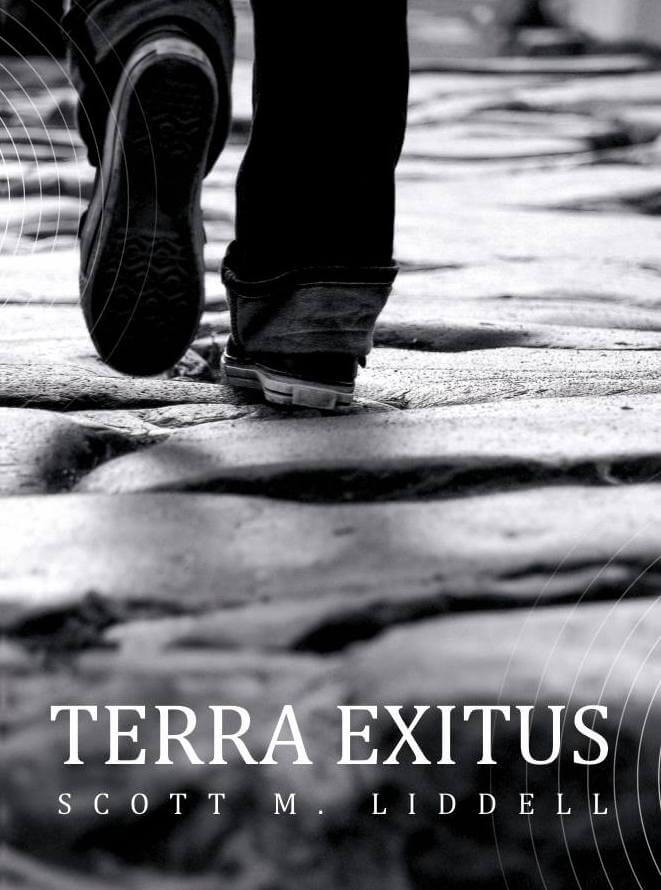There is something distinctly serendipitous about receiving this book from a kindly benefactor (yes, I’ve been reading Dickens) on the same day as I signed up for Instagram. You see, there is a very clear and distinct line of DNA between Parr’s images and the 21c hipster cranking out pictures of his cappuccino in a retro style. Because of this, we are all wannabe Parr’s seeking to find some basic truths in what we see, to create kitsch in the mundane, art from the every day. But that is pretty much where the serendipity ends.
The images we take now and stain with digital tobacco don’t form any kind of real cultural history. The story doesn’t relate to what’s in the images, what they are of. The Instagram story is about how the photos are taken, how many people are taking and sharing and, also serendipitous timing, how much the app that allows you to do that is worth to Facebook. Sure, Instagram-style photos are of their time but their style is borrowed. Borrowed from an earlier time that we all remember. And remember fondly. And that’s the trick that made them $1 billion. Whether it is simply a direct reminiscence or the fact that it indirectly can make very dull photos look cool (and, by extension, us feel cool) Instagram filters the world into something pleasing for everyone.
Something pleasing for everyone. Like warm summer days. Ice cream on the beach. Fun fairs and amusements. This is what we hark back too in the filtered Instagram world but… *record scratch* – maybe it wasn’t like that.
Martin Parr‘s The Last Resort documents exactly those summer days in the Merseyside resort of New Brighton. First published in 1986, it has just been reissued by Dewi Lewis Publishing.
And here’s the thing. Our 2012 Instagram brains tells us that summers in the 80’s were fantastic. We were young, we were happy and Maradona had just punched the ball passed Peter Shilton. So, the book should be a light and breezy trip down memory lane. It should be like that bit at the end of Ratatouille when a single taste whisks the food critic back to his childhood.
But it’s not like that.
True social documentary is required to record the absolute truth and this is what Parr does. And the truth is, no one (aside from an awkward looking beauty queen) is smiling. What we see throughout the book is a series of stark, unforgiving images of people on holiday, during perhaps the highlight of their year, sitting amid squalor and looking miserable.
When my friends and family talk about our “Scottish Holidays of the 70’s” ( in an Ivor Cutler style, we probably did micturate into sponges ) we try to revel in the misery of it. We tell ourselves it was cold and it rained and we didn’t feel like actors. But I think of ma and I *do* want to go back there. Because, yes, although standing on a stoney beach in a gale wearing shorts and a kagoul ain’t entirely fun, I do remember smiles. Even with endless days of rain rattling off metal caravan roofs, there were incidents and accidents (I built a model of a Chinook, my Mum sat on it) to keep us amused.
Above all, What Parr’s book does for me is force a complete reappraisal of all those 70’s and 80’s holidays in the UK. Ok, so maybe I was a moody teenager reading Camus in Scarborough but I still enjoyed the mock sea battle in Peasholm Park. I don’t have any memories like the ones captured herein.
You see, there is NO joy in the faces of any of the people in the book. As Camus would have it, A Happy Death. A title that shares a lot with The Last Resort.
The book shows people who are doing the holiday thing by rote. You head for the sea in the sun, eat chips, have fun. It what you’re supposed to do. Lack of money, lack of imagination compels them there and, blind to the mess around them, they sit in zombie-like trances inside their false holiday bubble, imprinted, imprisoned in a hope that isn’t there.
And yet, despite all of that, I bet they all returned home and when asked “Did you have a nice time?“, they would all say “Yeah, it was great“. All part of the same programming that took them there in the first place.
You can see this in every single picture. You don’t see so much in many pictures. And this is the particular genius of Parr. Much like my initial reaction to Eggleston, anyone could have taken the images, but they didn’t, Parr did. Unlike most/all of photo book reviews I find myself not saying”the photos are great, buy it and have a look” – that’s not to say that the photos aren’t great and you should buy it – but, somehow, it seems more important to talk about the impression it left. After all, I was a child of this era, this isn’t looking back at a sepia world and wondering why they’re all wearing bowler hats in the sun, these are photos of, if you will, my generation. And you know what? My generation looks pretty horrible. And that’s a surprise. And, what more can you ask of a book but to surprise and make you reflect? I’m not going to say any more about the book or the pictures other than to say this, buy it.
So, a big thank you to my mystery benefactor for this book. Wonder if it was Ms Havisham or Abel Magwitch? Perhaps a bit of both. Only he will appreciated how amusing that is!





Very nice – can’t say I agree with much of it, though. You seem to be filtering 70s holidays through the expectations of a man in 2012, rather than through those of someone actually in the 70s. People were content with holidays like that and had a good time 99% of the time – one arty book pretending otherwise by choosing a certain sort of photo doesn’t in any way make that less true.
Short and a kagoul, though – that could be less than pleasant in a gale 🙂